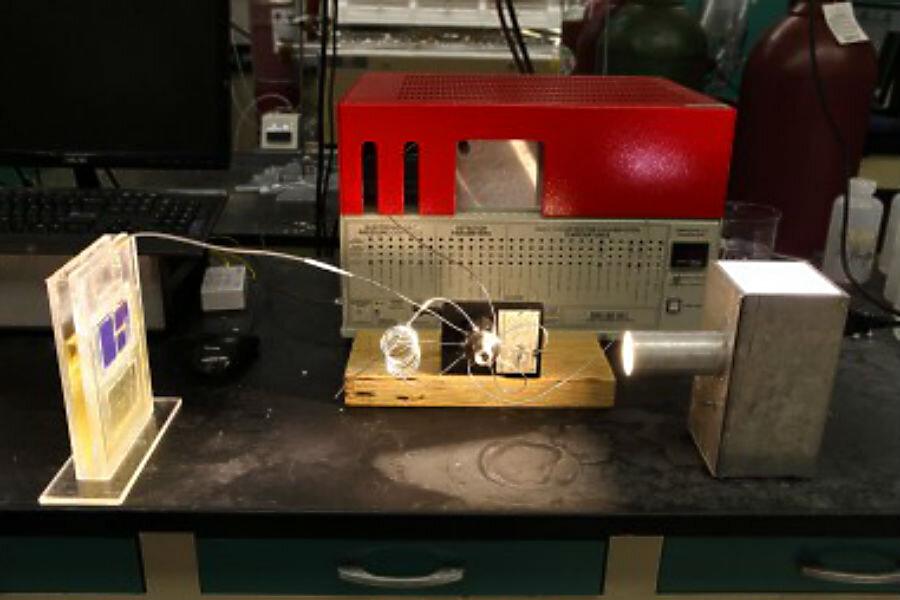Scientists flip energy equation with solar leaf that converts CO2 into fuel
It’s often smarter to borrow from nature than reinvent the wheel.
That was the approach of researchers at the University of Illinois at Chicago (UIC) to remove carbon dioxide (CO2 ) from the atmosphere, and convert it into an efficient, inexpensive fuel.
The result: an artificial leaf that turns CO2 into fuel, "at a cost comparable to a gallon of gasoline" could render fossil fuel obsolete, according to the researchers.
The “leaf” is one of a growing number of inventions that mimic photosynthesis to remove excess carbon from the atmosphere, and convert it into new, sustainable forms of energy to power our world.
“The new solar cell is not photovoltaic — it’s photosynthetic,” said Amin Salehi-Khojin, an assistant professor of mechanical and industrial engineering at UIC and the study’s lead author, in a statement. “Instead of producing energy in an unsustainable one-way route from fossil fuels to greenhouse gas, we can now reverse the process and recycle atmospheric carbon into fuel using sunlight.”
The solar cells Dr. Salehi-Khojin and his team built function like a plant’s leaves. Except instead of converting carbon dioxide into sugar, the artificial leaf converts the gaseous compound into synthesis gas — a mixture of hydrogen and carbon monoxide. Synthesis gas, or syngas, could be burned for fuel, or converted into diesel or other hydrocarbon fuels.
The concept of reduction reaction — converting CO2 into a burnable form of carbon — isn’t new. But scientists previously relied on silver and other expensive precious metals to break gas into storable energy. UIC researchers took a different approach. They relied on a nano-structured compound, a transition metal dichalcogenide (TMCD), to break down carbon dioxide. They paired a kind of TMCD — a nanoflake tungsten — with an ionic liquid inside a two-compartment, three-electrode electrochemical cell.
When light strikes the "leaf," hydrogen and carbon monoxide bubble from the cathode, while free oxygen and hydrogen ions are released from the anode.
Leafs could be spread throughout a solar farm, or used in smaller applications, the researchers said.
The invention isn’t the only one of late to use the concept of photosynthesis to create a new form of energy. The researchers note the process they employed has been used to create other forms of hydrogen energy. Researchers at Harvard University have even created hydrogen through synthetic photosynthesis in a process they say is 10 times more efficient than in nature, as The Christian Science Monitor’s Jason Thomson reported in June.
That process relies on bacteria. The system is confined to a jar with just two electrodes, Ralstonia eutropha bacteria, and water. When an electric current passes through the electrodes, it breaks the water molecules down, releasing hydrogen gas.
“You can use hydrogen as a source of energy, [and] burn it,” co-author Pamela Silver of Harvard University told the Monitor. “Instead, we decided to take advantage of bacteria that take in hydrogen and carbon dioxide and use them to grow.”
As they grow, explains Dr. Silver, these organisms produce certain compounds. The bacteria can be genetically engineered to make useful things like alcohol and plastic precursors.
While the artificial leaf UIC researchers invented is just artificial, not bionic, it’s applicability isn’t confined to this world. They note it can even be used if water is found on Mars. Mars’s atmosphere is mostly CO2 , after all.






